Key in a search term below to search our website.
Key in a search term below to search our website.
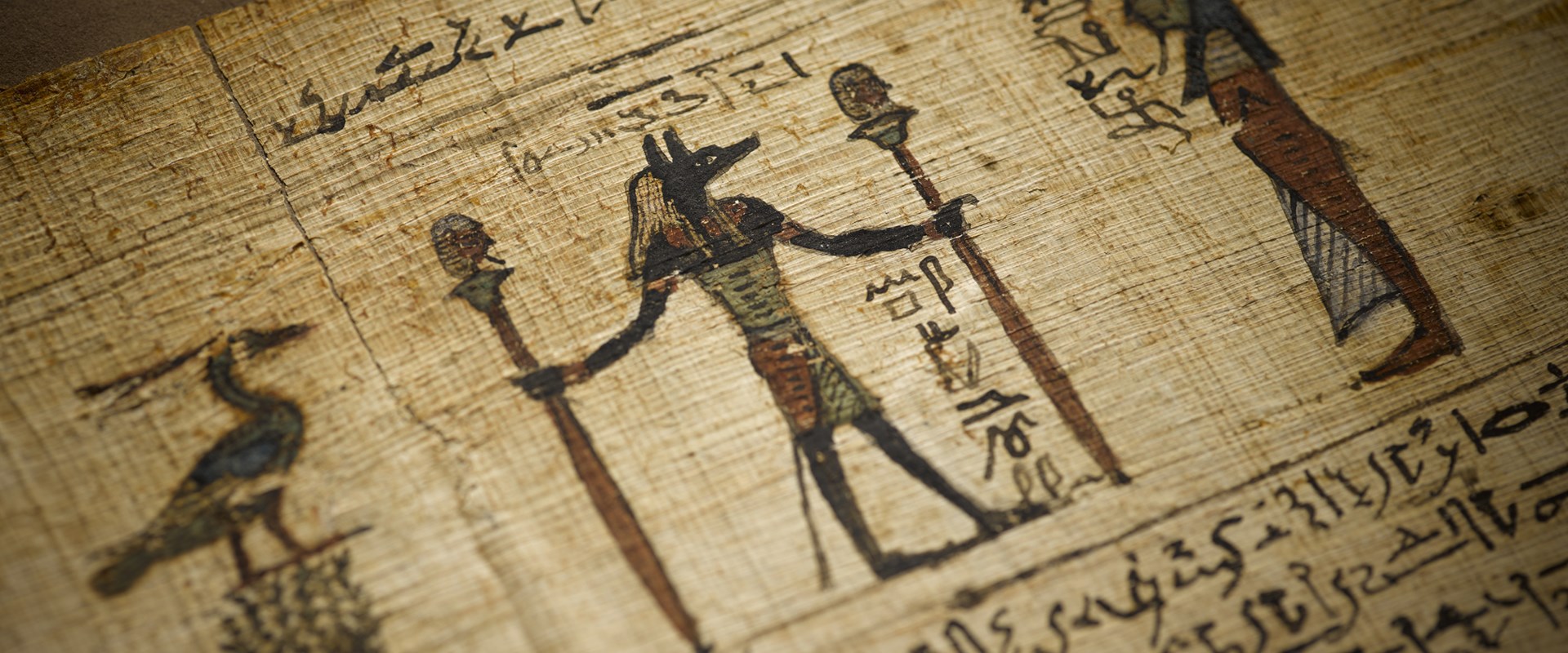
Two detailed funerary papyri tell the story of a unique couple from ancient Egypt. Discover the lives of the high official Montsuef and his wife Tanuat, whose intact Roman-era family burial was excavated by Alexander Henry Rhind.

Top: Funerary papyrus of Montsuef. Bottom: Funerary papyrus of Tanuat.
Montsuef and Tanuat’s papyri are special because they are not standardised like other funerary papyri; they include personalised details about the good lives they led in the hope this would help them reach the afterlife. They also include details about the mummification process, so they are important sources about the materials used to preserve the body and the rituals involved.
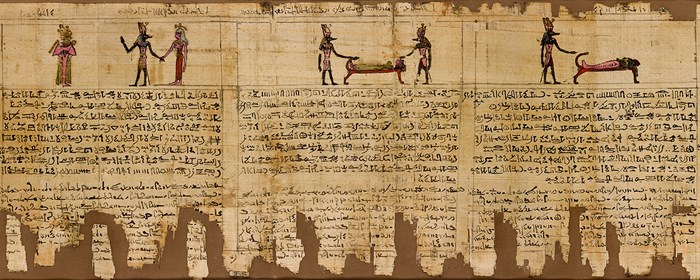
Funerary papyrus of Tanuat, Thebes, Egypt, 9 BC.
Date:
Roman Period, 9 BC
Materials:
Papyrus
Location:
Excavated by Alexander Henry Rhind in a tomb in Sheikh Abd el-Qurna, Thebes, Egypt
Museum Reference:
Papyrus of Montsuef A.1956.313 and Papyrus of Tanuat A.1956.314, known by Egyptologists as Papyrus Rhind I and II
On display:
See the Papyrus of Montsuef on display in our Ancient Egypt Rediscovered gallery.
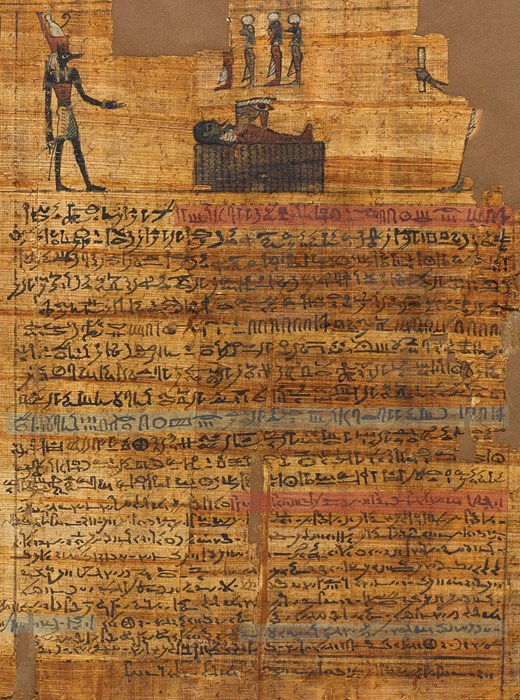
Montsuef's papyrus is personalised with details of his life, and is written bilingually in older hieratic and later demotic scripts. The older hieratic script had religious precedent, while demotic was the everyday script used at the time, which Montsuef himself was probably able to read.
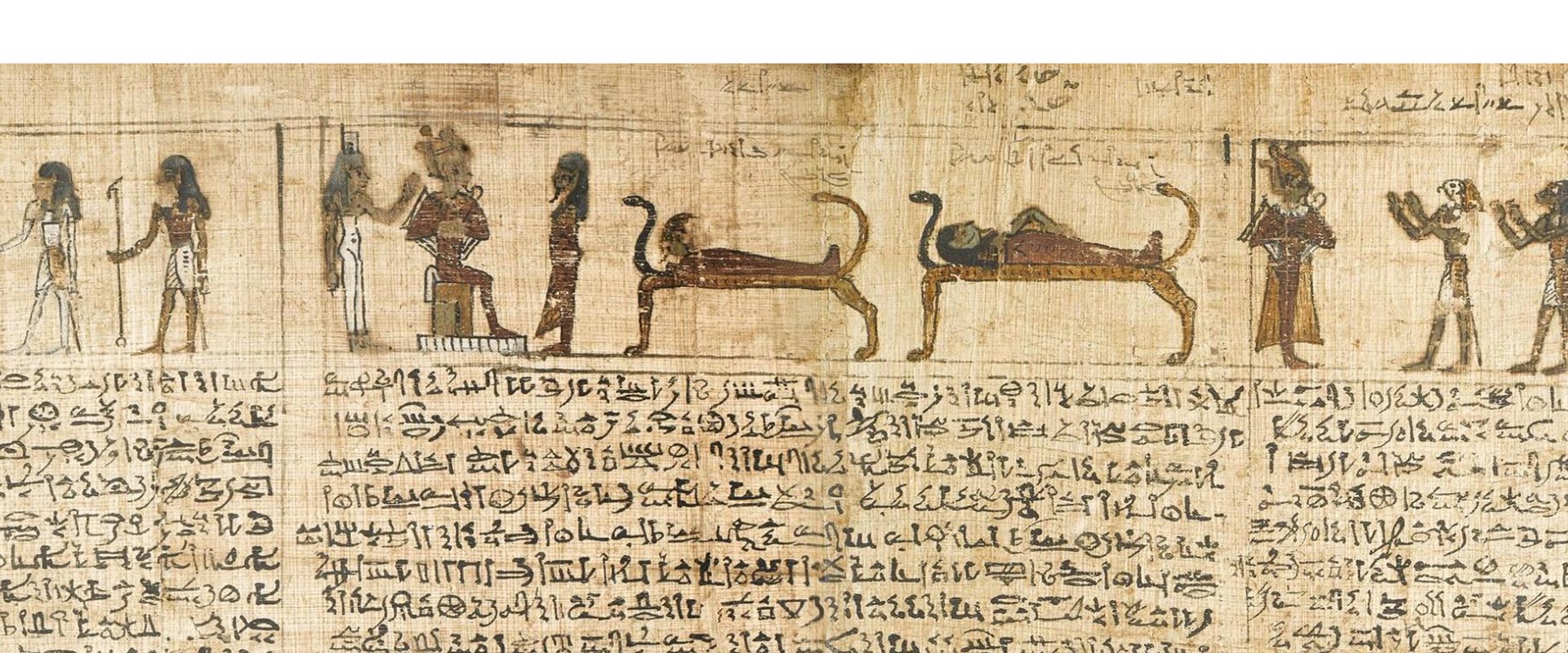
The funerary papyrus of Montsuef.
When indicating where the text has been translated, the quotation is highlighted in red, first in demotic above, then again below in hieratic. If there is a second quotation from the same column, this is highlighted in blue. Both hieratic and demotic were written right-to-left, so this is the direction in which both texts should be read.
The text tells us that Montsuef was the son of Menkaure, a priest of the god Montu-Ra, Lord of Armant. Montsuef’s birth date, 4 December 69 BC, is written as:
‘Regnal year 13, the 27th day of Hathor-month, of Pharaoh Ptolemy XII (father of Cleopatra VII).’
Montsuef was 59 years old when he died. Montsuef lived through the Roman conquest of Egypt, so the date of his death, 4 July 9 BC, is written as:
‘Regnal year 21 of Caesar Autocrator (Roman Emperor Augustus), the 10th day of Epip-month.’
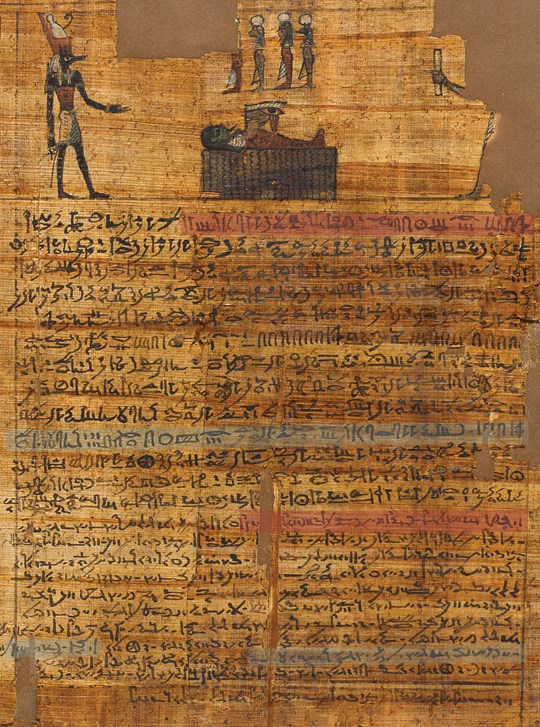
Column 1 of the funerary papyrus of Montsuef, Thebes, Egypt, 9 BC.
This image shows Montsuef lying mummified between two jackal-headed figures: embalming priests wearing masks to play the role of Anubis, god of mummification. Montsuef wears a style of beard usually worn by gods and his skin is green, the colour of growth and rebirth associated with Osiris, king of the afterlife. The text provides a speech for the embalming priest.
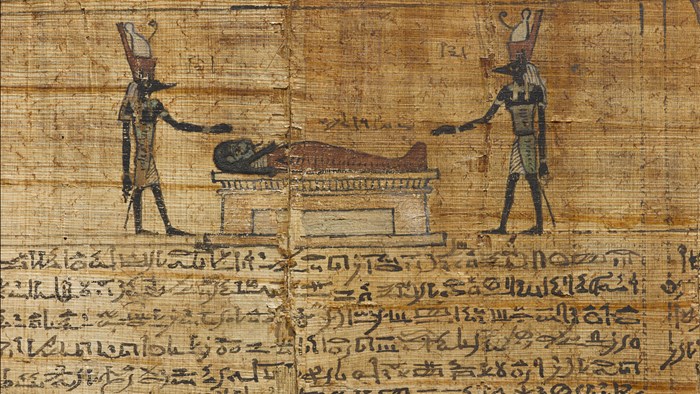
Column 2 of the funerary papyrus of Montsuef, Thebes, Egypt, 9 BC.
The text tells us about the rituals performed for Montsuef during the mummification process and what materials were used:
‘17 processions will be made for you within the 70 days of mummification.’
‘103 litres of sacred ointment will be boiled for you, like that which is prepared for sacred bulls. You will be anointed with oil by Horus.’
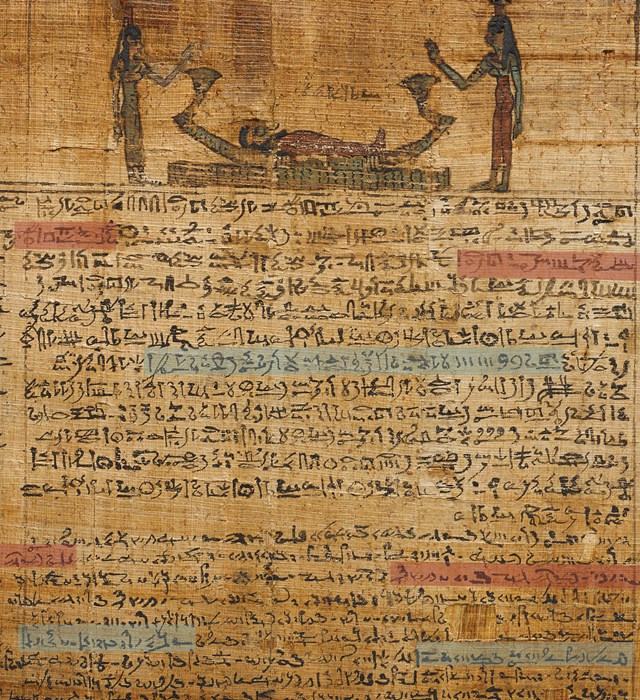
Column 3 of the funerary papyrus of Montsuef, Thebes, Egypt, 9 BC.
This image shows the jackal god Anubis presenting the mummified Montsuef to Osiris, seated on a throne, followed by Thoth, Isis and Nephthys.
The text tells us about the good life Montsuef lived:
‘You passed your lifetime on earth having a full measure of every good thing that your heart desired, no man having become poor because of you and without having done a misdeed.’
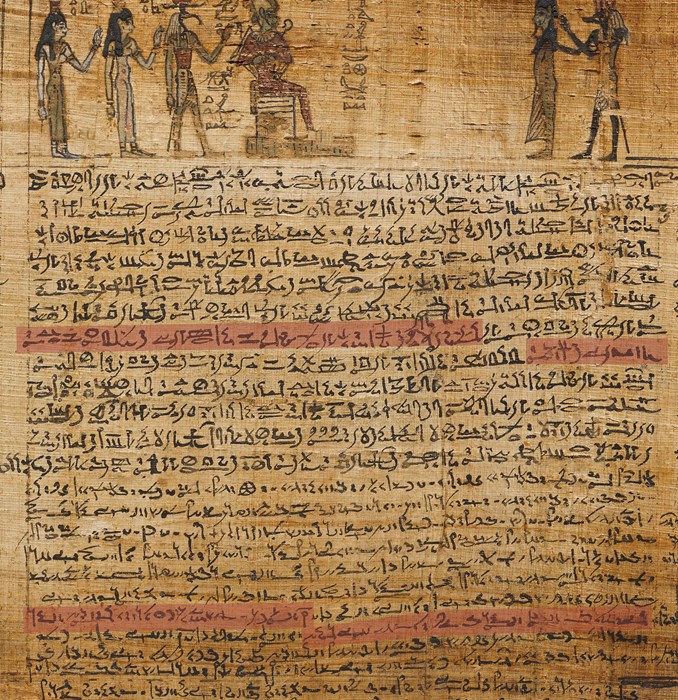
Column 4 of the funerary papyrus of Montsuef, Thebes, Egypt, 9 BC.
Two jackal-headed figures are shown pouring water over Montsuef to purify him. The text introduces a spell to be spoken aloud by priests:
‘Words for recitation: Horus will purify you on your entrance to the sacred underworld.’
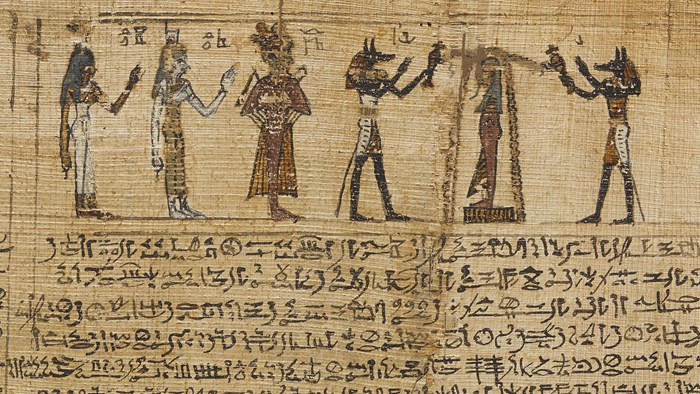
Column 6 of the funerary papyrus of Montsuef, Thebes, Egypt, 9 BC.
The first selection of text tells us Montsuef was a good man:
‘O one who has died and gone to the West, you grew old on earth in a happy life. Do not let worry be in your heart. Small children go to the West, but you reached a great age on earth. You drank and ate there. You did all that your heart desired and everything was spread out before you. “No” was not said in your presence on any day.’
The second selection of text tells Montsuef what to say to Osiris:
'Call out in a loud voice: O my lord, my father Osiris! I am an excellent man who is on the path of righteousness…I have not committed a sin, your abomination, in my lifetime… I gave bread to the poor.’
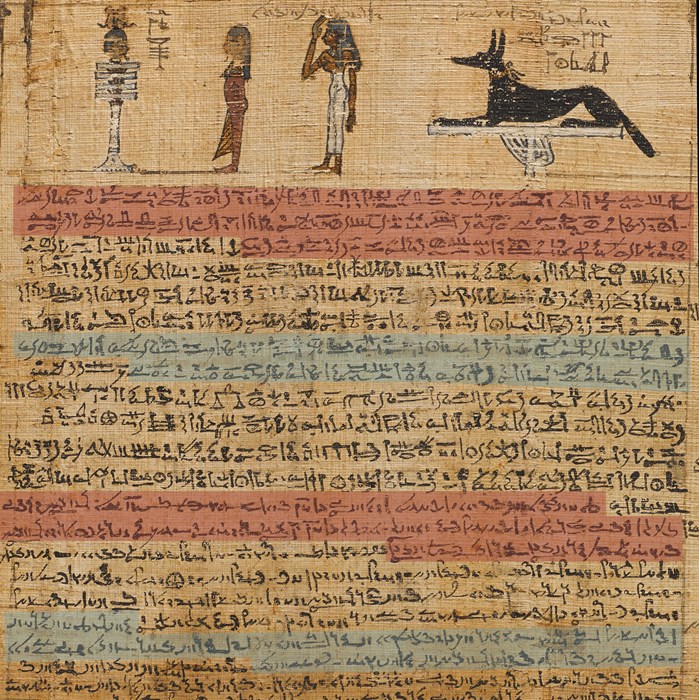
Column 7 of the funerary papyrus of Montsuef, Thebes, Egypt, 9 BC.
The image shows Montsuef being presented to Ma’at, the goddess of truth and justice, by the god of writing Thoth. Thoth records the verdict on the judgement of Montsuef. The text derives from an ancient funerary ritual that was over 2000 years old when this papyrus was written.
The Opening of the Mouth ritual was used to reawaken the senses. The eyes, nose, mouth and ears were touched while an appeal to the gods was recited, ‘May you establish his heart in his body. May you open his eyes for him. May you open his mouth for him. May you open his nostrils for him.’
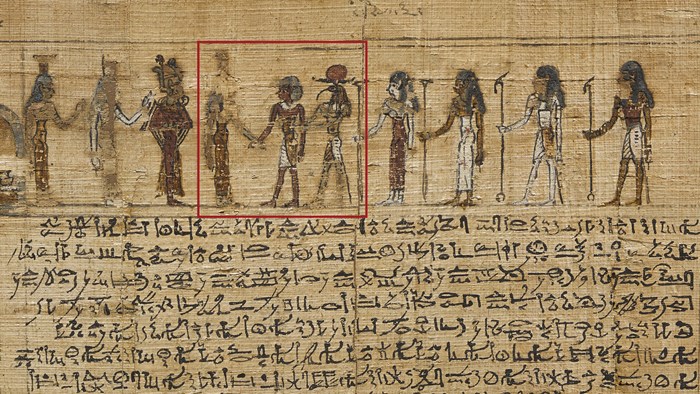
Column 10 of the funerary papyrus of Montsuef, Thebes, Egypt, 9 BC.
Montsuef is shown lying in his sarcophagus in the protective embrace of the sky goddess, Nut. Montsuef’s spirit is shown leaving his body in the form of a ba-bird. The jackal god Anubis guards the cemetery.
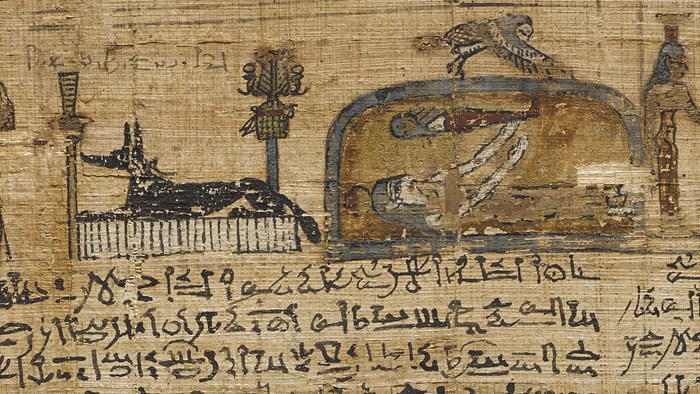
Column 11 of the funerary papyrus of Montsuef, Thebes, Egypt, 9 BC.
This image shows Thoth recording Montsuef’s entry to the afterlife before Osiris, Isis and Nephthys.
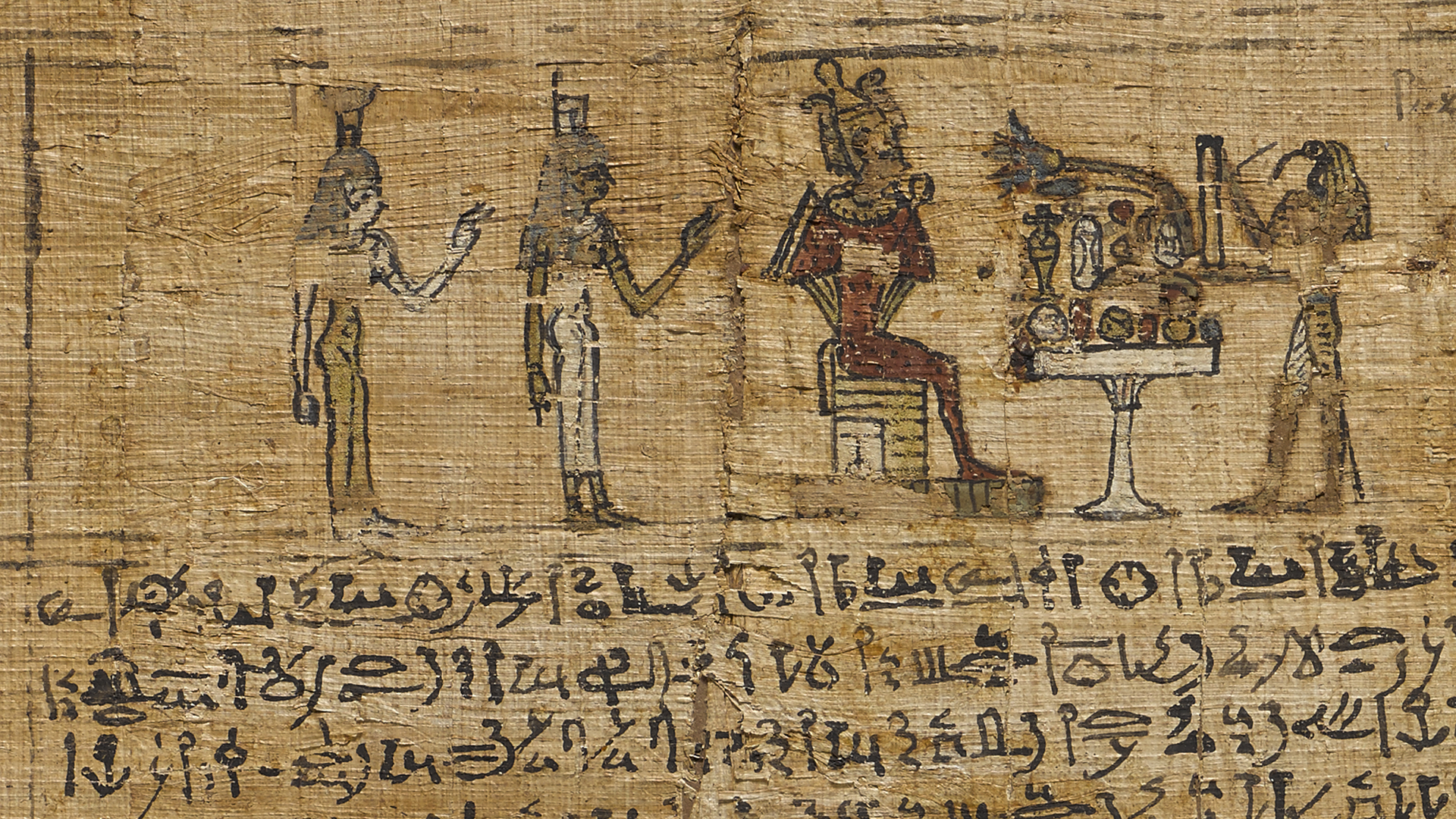
Column 11 of the funerary papyrus of Montsuef, Thebes, Egypt, 9 BC.
The Ancient Egypt Rediscovered gallery at the National Museum of Scotland presents the remarkable culture and achievements of the ancient Egyptians, highlighting individual stories to give a sense of their values and personal lives.
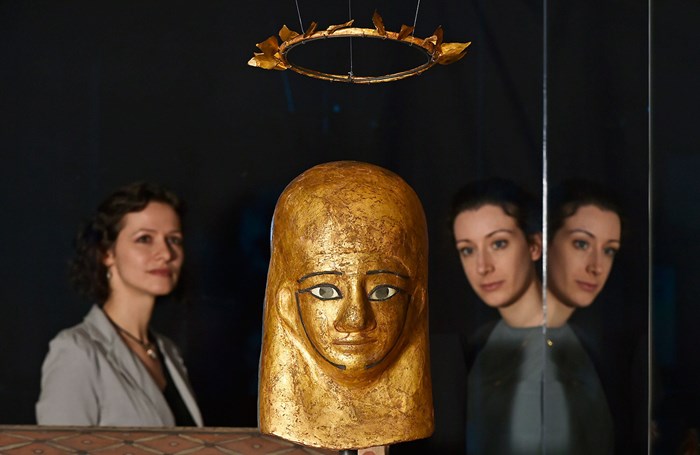
Mummy-mask depicting Montsuef on display in the Ancient Egypt Rediscovered gallery